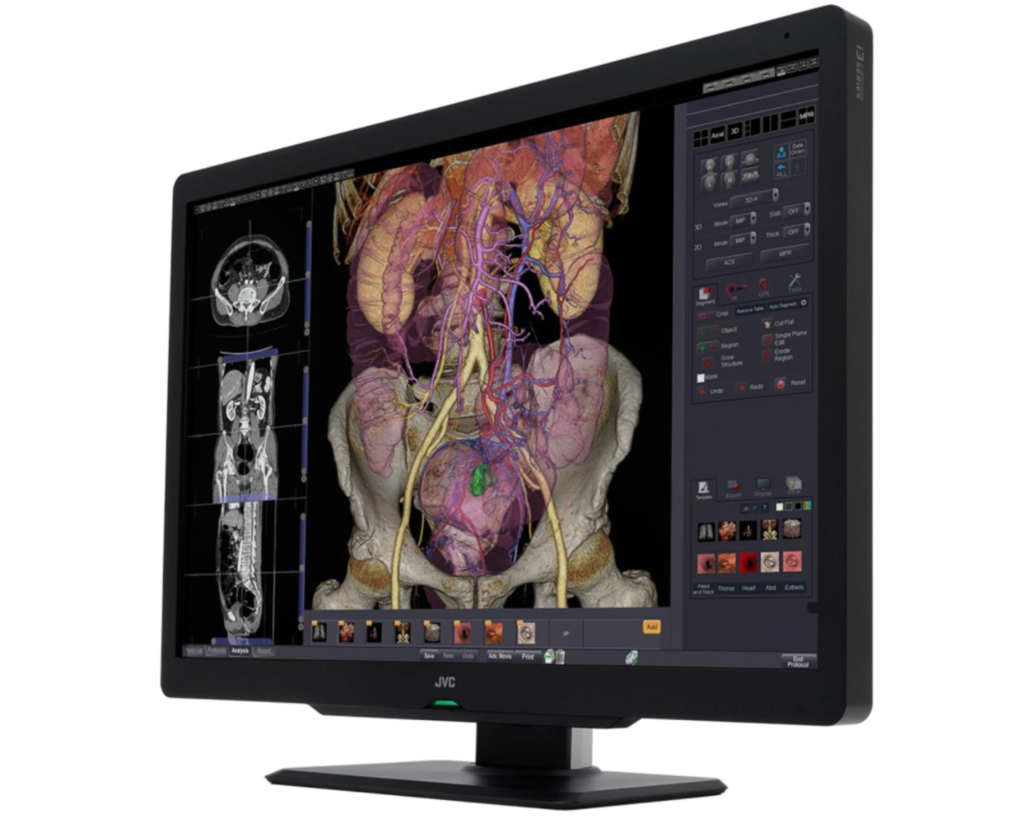JVCKENWOOD monitors get tech upgrade
Five years ago, JVCKENWOOD redesigned its monitors from the ground up and launched the i3 Series – kicking off a success story. At first glance, the new housing design stood out; the displays were significantly narrower than in the previous generation.
“In the meantime, we have gradually raised all monitors to the i3 level,” said Marcel Herrmann, Marketing Manager Medical Imaging at JVCKENWOOD. “In the process, we have not only further developed the devices visually, but also technologically. The new 3D lookup table, for example, enables the best possible colour calibration. Colours have never been so natural and precise. This also ensures that the image impression on every monitor is the same throughout the entire setup. Combined with the new colour front sensor, we can ensure this for the entire life of a display.”
A unique feature five years ago was autonomous calibration, i.e. independent of the PC. The procedure is very simple: the user defines any time for the calibration, for example at night. When the computer is switched off, the display is activated and calibrated. It then returns to sleep mode
Sensors ensure stability
The sensor system of the i3 monitors consists of a front sensor and an ambient light sensor. “The former continuously measures luminance and colour on the display and reports the values to the control unit. This ensures very stable brightness and high colour fidelity. The latter detects the strength of the ambient light and compensates for it for optimal calibration,” explained Herrmann.
In addition, the monitor includes a human sensor. This detects whether a doctor is sitting in front of the screen, which helps save energy when the monitor is not in use. This can ensure, for example, that a physician is not disturbed by quality control during reporting. In addition, the Uniformity Equalizer ensures stable images across the screen by correcting luminance and colour uniformity.
Quality assurance made easy
Quality assurance for the i3 monitor is provided by the proven QA Medivisor Agent. “This allows our customers to safely perform acceptance and constancy testing according to DIN 6868-157 in compliance with the specifications. For the constancy test, even the built-in sensors can be used,” said Herrmann. The intuitive and thus easy-to-use user interface enables effective management of daily operations in radiology.
For more information, visit: http://healthcare.jvc.com/
Digital issue: Please click here for more information


